
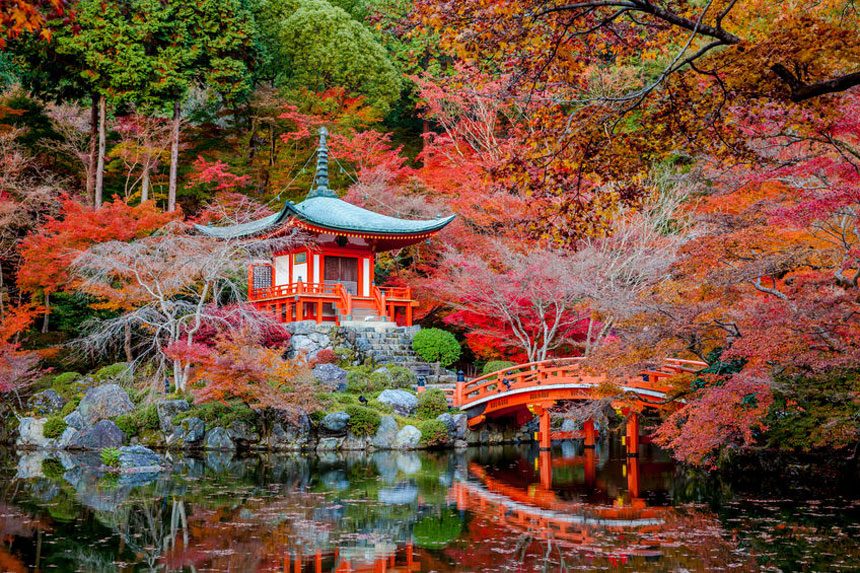 Image credit: pigprox/123rf
Image credit: pigprox/123rfIn the Land of the Rising Sun, Tokyo is the city that never sleeps.
It is the epitome of a modern metropolis. The city is also the cradle of futuristic technology, cutting-edge engineering, state-of-the-art architecture, and trendsetting fashion.
In Tokyo, contrast is a way of life. Innovations and development give space for traditions respectfully. Grand old palaces, sacred shrines, and other historical landmarks play an important role in modern-day Tokyo. Ancient customs and traditions continue to be practiced even by the young generations.
For Tokyo’s millions of visitors, a trip to the city can be dizzying due to the vast number of activities it has to offer.
Enjoy your Tokyo time with our list of top 10 things to do. Take one or take them all, just make sure that your every moment is counted during your entire stay in this wonderful city.
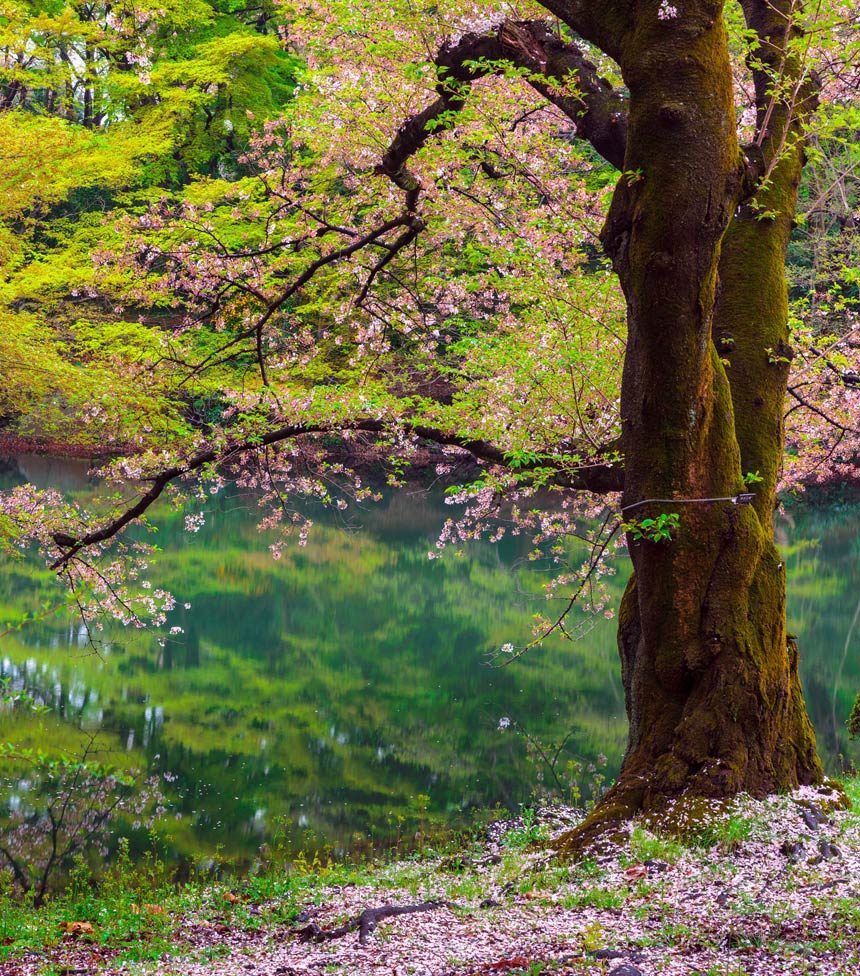 Image credit: lkunl/123rf
Image credit: lkunl/123rfWhat
The Shinjuku Gyoen National Garden is one of the biggest and most beautiful gardens in Tokyo. The place becomes extremely amazing in cherry blossom season when more than 1000 cherry trees show their beauty.
This green space was first developed in the Edo period as part of the property of the feudal lord, Lord Kiyonari Naito. It was completed as an imperial garden in 1906 and was later destroyed during World War II. The garden was rebuilt and designated as a National Garden after the war. It was opened to the public in 1949.
The Shinjuku Gyoen National Garden occupies 58.3 hectares with a circumference of 3.5 kilometres. It features three main gardens: Japanese Traditional Garden, English Landscape Garden, and French Formal Garden.
Why
A day at Shinjuku Gyoen is a precious opportunity to relive history, to be one with nature, and to nurture the soul.
Walk where emperors once walked amid the greenery of Shinjuku Gyoen. Stroll beneath the shade of 20,000 trees and see species from around the world. Spend some quiet time at one of the ponds and escape the bustling city life. Take part in a traditional Japanese tea ceremony at the tea house.
Go in spring to catch the cherry blossoms or in autumn for the colorful autumn foliage.
Visitor Information
The Shinjuku Gyoen National Garden is open on Tuesdays to Sundays at 9:00am to 2:00pm.
Admission fee is 200 yen (US$2.00) for adults and 50 yen (US$0.50) for junior high school and elementary students.
The garden can be accessed through three gates: Shinjuku, Sendagaya, and Okido. All these gates are within walking distance from bus stops and train stations.
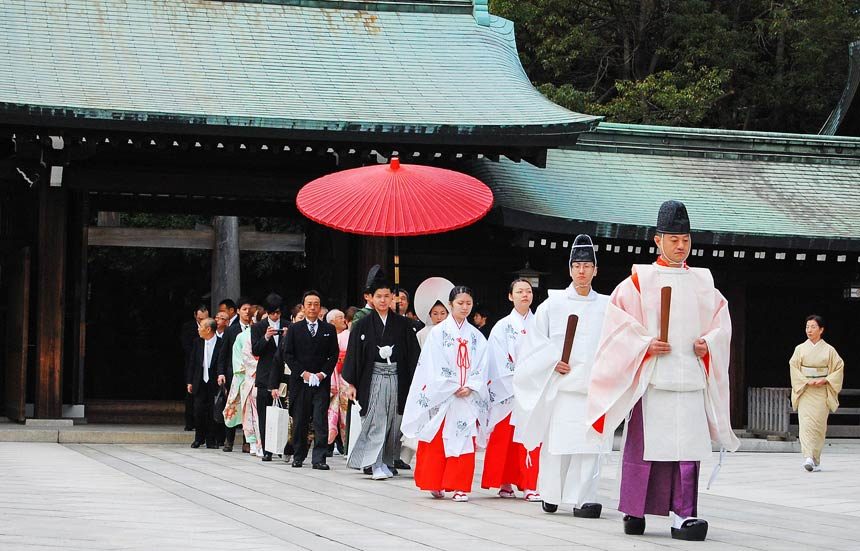 Image credit: Todd Lappin/Flickr
Image credit: Todd Lappin/FlickrWhat
The Meiji Shrine is a large Shinto shrine in Shibuya, Tokyo that is dedicated to the souls of Emperor Meiji and his wife, Empress Shoken. They are the very important persons that help in transforming Japan into a modern state.
Although their actual graves are located in Kyoto, people still initiated the construction of the shrine to venerate the beloved royal deities. 100,000 trees were donated, by people from all parts of Japan and from overseas, to create the surrounding forest that is now home to endangered flora and fauna.
Why
The Meiji Shrine immerses people in Japanese culture and tradition. If you are lucky, you can witness a traditional Shinto wedding at the shrine. Sumo dedication ceremonies are also conducted at Meiji Shrine in January and September.
For an authentic experience, act like the locals and bow at the gate before proceeding to the shrine grounds. Perform the traditional cleansing ritual by washing your hands and mouth at the temizuya. Whatever you do, don’t let the dipper touch your mouth! Pay your respects and say your prayers at the shrine. You can also write your wishes on an ema (wooden tablet) and hang it by the trees or take it home as a souvenir.
Highlights at Meiji Shrine
The torii (shrine gate) at Meiji Shrine is among the biggest that you can find in Japan. It is made of 1,500-year old cypress. There are two toriis at Meiji Shrine that both stand at an imposing height of 40 feet. Pose beneath the gate and see how it dwarfs you with its loftiness!
The Imperial Garden already existed even before the establishment of the shrine. It is said that Emperor Meiji himself designed the iris garden for Empress Shoken. The garden is a popular shrine attraction in June when the irises are in full bloom.
The Treasure Museum exhibits personal items that belonged to Emperor Meiji and Empress Shoken. The museum also displays portraits of former emperors and the elegant kimono worn by Japanese royalty.
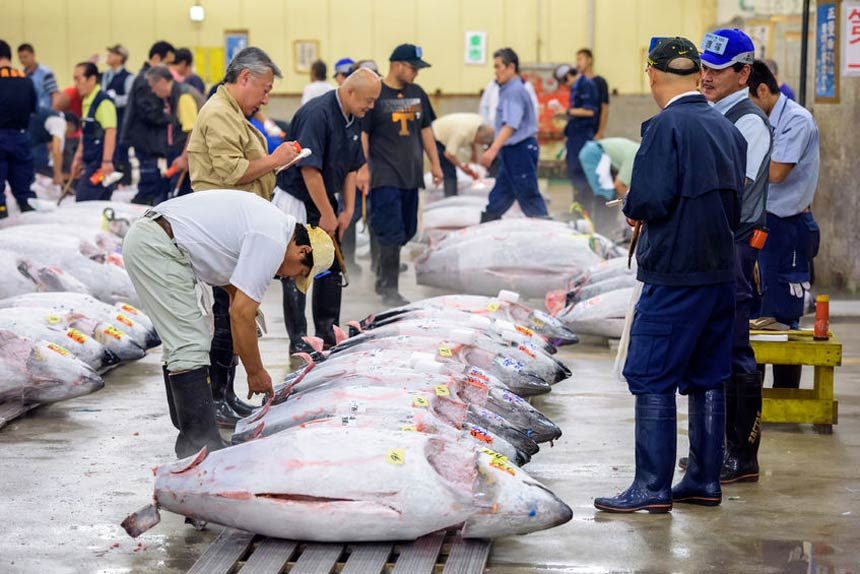 Image credit: sepavo/123rf
Image credit: sepavo/123rfWhat
The Tsukiji Fish Market is well known as the biggest fish market in the world. It is where you can find the freshest fish for sushi and sashimi in Japan. This deliciousness-promising market is a must-visit for Japanese food lovers.
The market is divided into an outer and an inner section. The wholesale fish trade happens at the inner market, which is also the venue of the famous tuna auctions.
The outer market is more suitable for tourists. Restaurants and retail stores breathe life into the alleys that host all the goodness. Here, shoppers can buy fish in smaller quantities and other Japanese food related products like wasabi, Japanese knives and bowls.
Why
When in Tokyo, one must enjoy sushi at least once. And to make that one time count, it should be done at the world-renowned Tsukiji Fish Market. It is simple because the freshest fish and the most skilful chefs there will bring about the most wonderful sushi and sashimi experience one can have in life.
A visit to the market can be a thrilling adventure. If you don’t mind waking up early, be there at 5:30am to witness the tuna auction. Access to this eye-opening activity is on a first come, first serve basis and only 120 visitors are given the chance to come in per day. So go early to ensure your spot.
Visitor information
The Tsukiji Fish Market is a busy place of business. Visitors must observe market rules and avoid blocking the flow of activities at the market at all times. Caution should be taken to avoid accidents and to maintain the sanitary standards of the market.
Activities at the market peak at 5:30am to 10:00am and die down around 1:00pm.
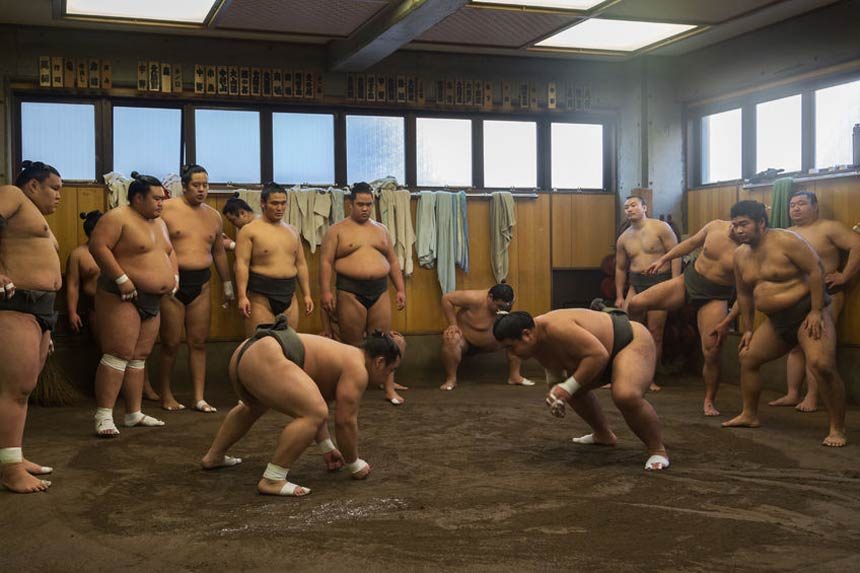 Image credit: olli0815/123rf
Image credit: olli0815/123rfWhat
Sumo wrestling is the national sport of Japan. Over the years, interest in the sport has increased together with the rising popularity of Japanese culture all over the world.
As a result, some sumo stables, called “beya”, have opened their doors to tourists. Guided tours are now available, allowing outsiders to watch the early morning practice sessions, known as asa keiko in Japanese.
There are roughly 45 sumo stables in Tokyo. Not all of them reveal their inner lives to the public so it is best to do your research before heading to one.
Why
The morning sumo practice sessions are the best and cheaper alternative to watching live sumo matches. Sumo tournaments are seasonal and the cheaper tickets are sold out fast.
But most importantly, a visit to a sumo stable gives us rare chance to witness sumo action as close as 20 feet! Yes, the limited size of the stables enables this.
Ditch the paid guided tour and go on your own for free. You are in luck if you are the only visitor of the day and have the ringside view all to yourself.
Observe proper etiquette at the stable
Visitors should avoid disturbing the sumo wrestlers while the practice session is ongoing. Even the slightest sound, like whispering or chewing gum, can be distracting and must be avoided.
Taking photos and videos of the practice is prohibited unless with special permission from the stable.
Go early so you can settle in before the start of the session. Pay your respects to the stable master and wrestlers by bowing. Children under 12 years old are not allowed.
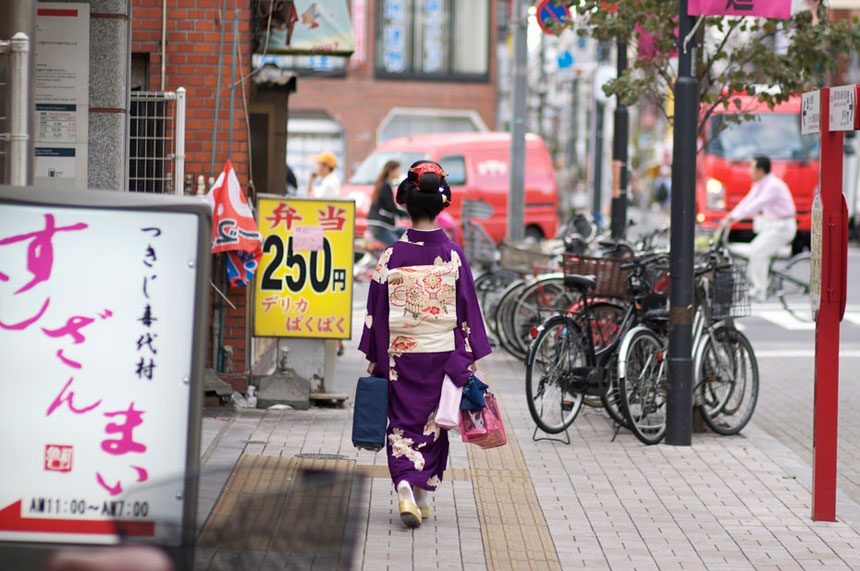 Image credit: Tokyo Times/Flickr
Image credit: Tokyo Times/FlickrWhat
Kimono is the traditional garment of Japan. It is normally worn during formal occasions.
Nowadays, kimono styles can be formal or casual, marked by the design and color of the fabric. During the hot summer days, the lighter yukata is worn rather than the heavy traditional kimono.
Having a custom-made kimono can be expensive. Japanese culture enthusiasts have an option of renting these beauties for an hour or a day at kimono shops. Some rentals are packaged with a tour, a photo session, or a Japanese meal. Props and accessories are also available to complete the look.
Why
Kimono is the ultimate Japanese costume and wearing this beautiful outfit is big in Japan and for tourists.
It is the secret desire of most women to wear a kimono and stroll the streets of Tokyo like a geisha. Men can also stroll around like a Samurai in a man’s kimono.
There is no better way to capture your Tokyo visit than a snapshot of you in a kimono with a Japanese shrine or garden in the background.
Top kimono rental shops in Tokyo
Asakusa Shichihenge is probably the cheapest kimono rental shop in Tokyo. For 3,300 yen ($32.56), you can already go around town in a kimono with tabi socks. Summer yukata rental even costs less at 2,800 yen ($27.63). Make sure to return to the shop by 4:30pm!
Sakaeya offers a tea ceremony with their kimono renting packages. The one-hour session has the price at 6,000 yen ($59.21) and requires advance booking. You can also opt for the yukata plan for 10,000 yen ($98.68) and get to own the garment afterwards.
Aki Kimono Rental offers a one-day kimono experience at their Shibuya and Ginza stores. This costs 6,480 yen ($63.94) and comes complete with a Japanese bag and zori sandals. Separate fees are required for photo sessions and Japanese hairstyling services.
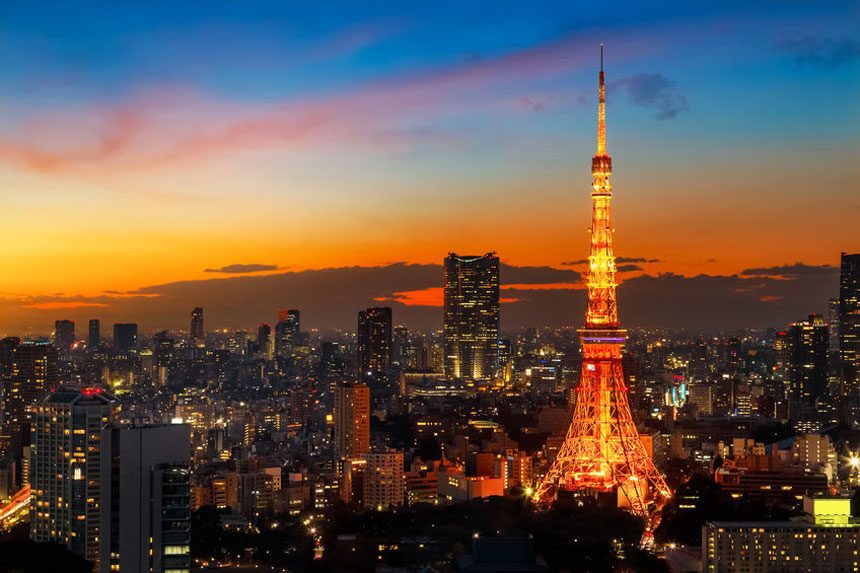 Image credit: coward_lion/123rf
Image credit: coward_lion/123rfWhat
The Tokyo Tower is an iconic broadcast tower that was built in 1958. It reaches 333 metres in height, standing higher than its inspiration, the Eiffel Tower. This sky-high creation is painted bright orange and white, following aviation safety regulations.
The Tokyo Tower remains as one of the most popular tourist attractions in Tokyo. To date, it has welcomed more than 170 million visitors.
Why
The two observatories of Tokyo Tower both offer a 360-degree view of Tokyo. On a clear day, you can even see as far as Mt. Fuji when standing at the special observation deck.
Feeling fit and adventurous? Take the outer staircase and feel the breeze as you climb 600 steps to the main observatory.
At night, the tower is beautifully illuminated with a display called “Landmark Light” that changes colors with the changing of the seasons.
Points of interest at Tokyo Tower
The Main Observatory is divided into two floors. At the first floor, you can find Café La Tour, which offers the breathtaking view with a cup of tea or coffee. Stand on the lookdown glass window and get a thrill of a downward view from the top of the tower!
The Great Shinto Shrine of the Tower is the highest shrine in Tokyo. It is located on the 2nd floor of the Main Observatory. Locals come to this religious site to pray for success in love and studies. Single? Pray to the Shinto God and you just might find love in Tokyo!
Foot Town is a 4-floor food and entertainment facility at the base of Tokyo Tower. See marine life at the 1st floor Tokyo Tower Aquarium. Grab a bite at the restaurants on the 2nd and 3rd floors. Enjoy anime fun at the Tokyo One Piece Tower, an indoor theme park based on the popular Japanese manga, “One Piece”.
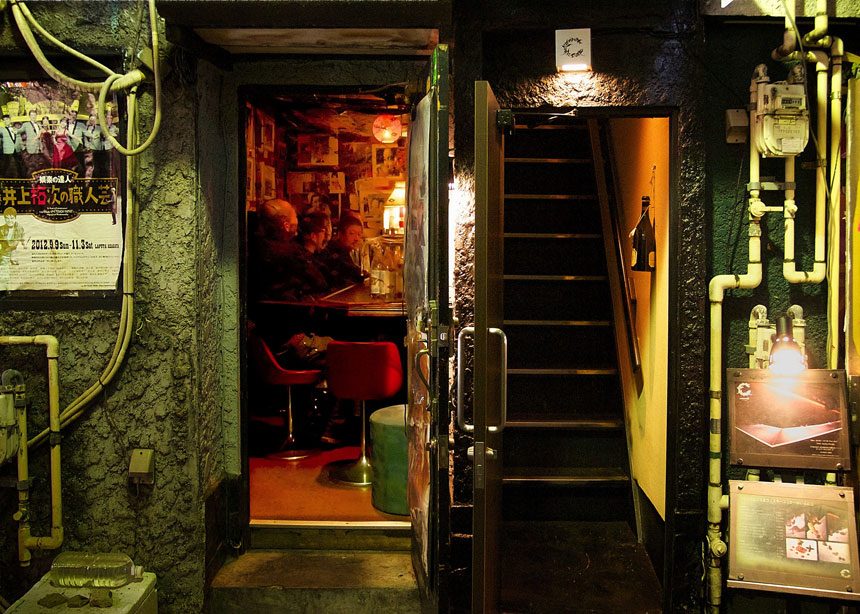 Image credit: Live Action Hero/Flickr
Image credit: Live Action Hero/FlickrWhat
Golden Gai is a popular night spot in Shinjuku, Tokyo. It used to be a red light district until prostitution was declared illegal in 1958. Since then, Golden Gai has cleaned up while maintaining much of its old Tokyo charm.
At first glance, Golden Gai looks like a shanty town with over 200 tiny bars, squeezed into a block with 6 alleyways. Most of the bars are just a few metres wide and can only accommodate 5-8 persons at a time.
However, don’t be fooled by its exterior. Drinks can be pricey at this alcohol mecca and some bars collect a cover charge. Many of them are exclusive for regular customers.
Why
Golden Gai offers a unique nightlife experience with a 1960s-style Tokyo setting. It is popular among artists, musicians, and actors. On some nights, you could even chance upon a Japanese celebrity!
Though it is often misconstrued as an exclusive night spot, many bars in Golden Gai are friendly to first-time visitors. Just look for the English signboards outside the bar and you’ll surely get a warm welcome when you step inside.
Recommended bars at Golden Gai
Albatross has one of the most fascinating interiors at Golden Gai. It is relatively spacious with two floors decorated with chandeliers, disco balls, stuffed animal heads, and other interesting items. The third floor is a rooftop balcony where you can enjoy your Japanese single malt whiskey beneath the Tokyo sky. Cover charge is 500 yen (US$5.00) and drink prices start at 700 yen (US$7.00).
Araku is another spacious bar at Golden Gai. It is owned by an Australian who is very welcoming to foreign guests. Sit at one of the couches and enjoy a glass of sake-based cocktails! Araku has no cover charge. Drinks cost 700 yen (US$7.00) and above.
Easy Rider pays homage to American biker bars and all things Americana. This cozy 10-seater venue is made livelier with the friendly English-speaking barman. Say the magic words (Easy Rider) to avoid paying the cover charge. Buy some bar chow and get good deals on your drinks!
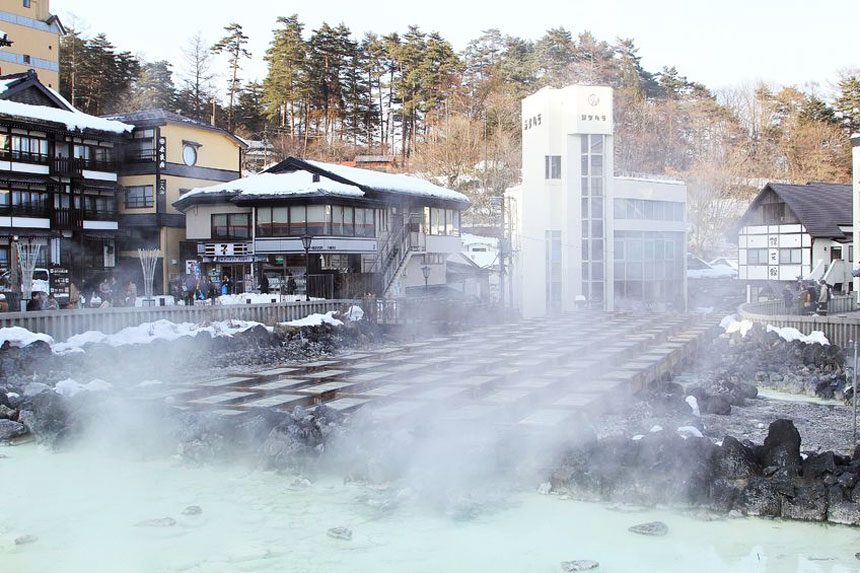 Image credit: banky405/123rf
Image credit: banky405/123rfWhat
Onsens are gifts of nature that spring forth from the volcano-rich land of Japan. These Japanese hot springs are long believed to have healing properties.
During the Edo period, sick people stay at an onsen for several days or weeks until they are healed. This gave rise to Japanese inns, known as ryokans, which is popular among tourists nowadays.
Traditionally, locals who wish to bath at an onsen would travel to the rural areas. Fortunately, the capital city of Japan also has onsen spas or resorts that are as authentic as those in the countryside.
Onsens in Japan can be categorized as indoor or outdoor, gender-specific or unisex.
Why
An onsen bath is a relaxing way to soothe the mind and body. The presence of minerals in hot springs multiplies the health benefits of this unique Japanese bath.
When traveling to Tokyo, it is highly recommended that you spend at least one night at a ryokan with an onsen. This provides an authentic experience of living the Japanese way of life. Go Japanese at a ryokan, complete with tatami room, futon, welcome tea, onsen bath, Japanese massage, and sumptuous Japanese meal.
Best onsen in Tokyo
Saya-no-yudokoro is considered as one of the best onsens in Tokyo. It features a natural open-air onsen that has direct supply of water from Itabashi-Maeno Hot Spring. Complete your stay with a stroll in the beautifully manicured Japanese garden and a filling Japanese meal at the old-style restaurant.
LaQua is a spacious onsen spa located inside Tokyo Dome City. The hot spring water is sourced from Koishikawa Hot Springs. It boast an outdoor bath, a massage bath and three types of sauna. Pamper yourself with add-on treatments like massage, body scrub, and aromatherapy.
Jinata Onsen is located in Shikine Island, south of Central Tokyo. The place is 160 kilometres away but it is still an administrative part of Tokyo. This onsen offers a unique blend of hot spring and ocean water bathing experience. The natural tub only appears during low tide and can be accessed by anyone for free.
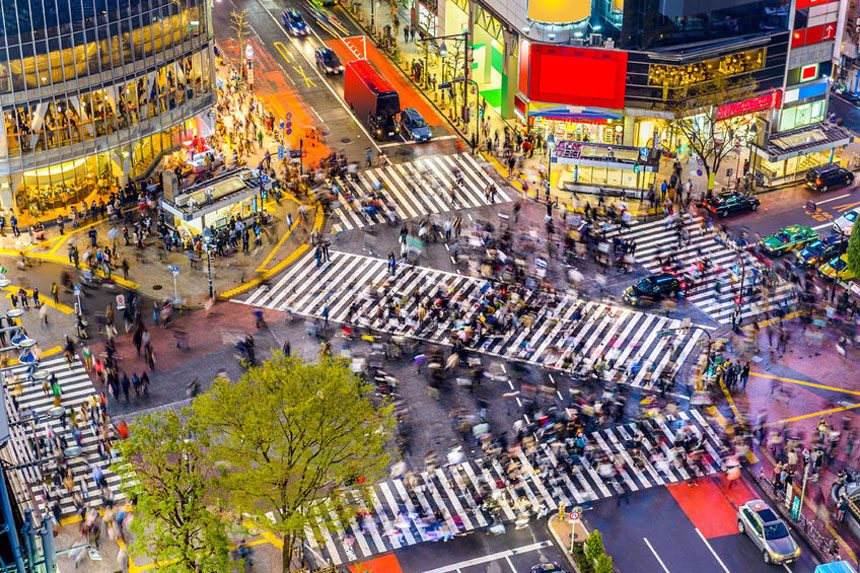 Image credit: sepavo/123rf
Image credit: sepavo/123rfWhat
If you’ve watched enough Hollywood movies or TV shows, then you must have seen a shot of the Shibuya Crossing in Tokyo.
This famous crossing stands out as one of the popular icons of Tokyo. It is the world’s busiest intersection with up to a million people walking across it daily. It is often likened to New York’s Times Square due to the sheer number of people and electronic advertisements overhead.
The action at Shibuya Crossing starts as the first train rolls in at Shibuya Station. Human traffic goes on all day and dwindles after the last train departs around midnight.
Why
Join the “scramble” at Shibuya Crossing and get a taste of daily life in modern Tokyo. It can be an exhilarating experience as you move quickly to the other side while dodging oncoming pedestrians.
Go at night and be mesmerized by the dazzling neon display at this light-filled intersection. Take a moment to snap a selfie once you successfully conquer the crossing!
Points of interest at Shibuya Crossing
Hachiko Square is the most popular meeting place in Shibuya. If you’re meeting a friend, wait around at the statue of Hachiko, the famous dog. Hachiko is a heart-warming part of Shibuya’s history. He came to the train station every day to meet his master after work even after his master died.
Shibuya 109 is a 10-floor shopping mall located across Shibuya Station. It is famous for trendy and youthful fashion sold in over 100 shops. Watch for fashionably-dressed gyarus – young Japanese women who wear thick make-up and often sport blond hair and tanned skin.
Hungry? Head to the Tokyu Food Show located at the basement of Tokyu Department Store adjacent to the train station. This sprawling food court features a wide array of Japanese and international dishes. Have your fix of sushi, sashimi, and tempura, or go international and enjoy some Vietnamese pho, Indian curry, and French pastries!
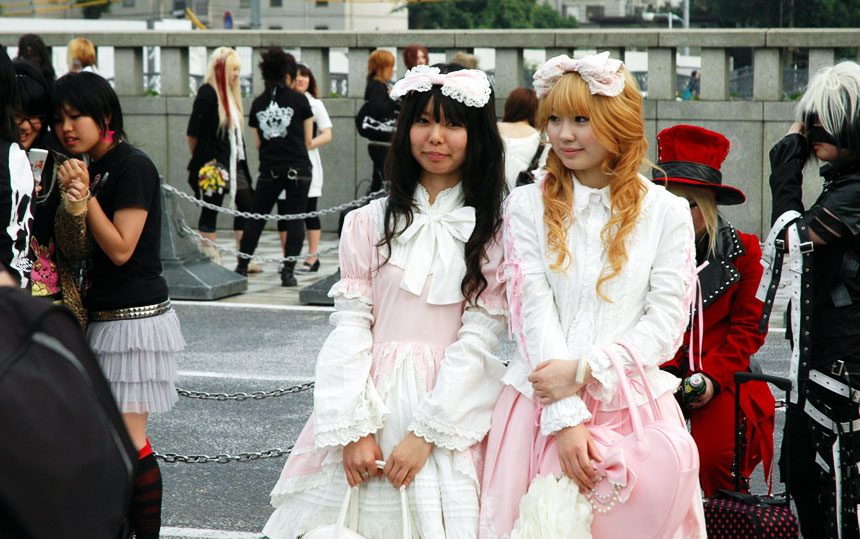 Image credit: triplefivedrew/Flickr
Image credit: triplefivedrew/FlickrWhat
Harajuku is a popular fashion district in Tokyo located between Shibuya and Shinjuku. It is famous as a heaven for Japanese youth who gather in the area decked out in colorful costumes and bizarre outfits.
Retail shops and restaurants line the streets of Harajuku. Shoppers can choose from small trendy boutiques to famous foreign brand shops.
Aside from fashion, Harajuku is also known for its wide green spaces that are visited by an eclectic mix of people.
Why
Forget your inhibitions and join the fun in Harajuku in your most outlandish costume!
If you don’t feel like dressing up, you can simply go with the crowd and take in the vibrance of Harajuku. Shop for kawaii fashion and dine on Japanese favorites at Harajuku’s various restaurants.
If you are the conservative type, being in Harajuku can be like stepping into a parallel universe. Say hello to the friendly cosplayers that seem to have leapt out of a Japanese anime!
Things to do in Harajuku
Explore Takeshita Dori. This pedestrian-only street is packed with shops that sell all things kawaii. Clothes, toys, and other cute items are on offer there. Grab some crepes or shop at the giant Daiso store that sells stuff for 100 yen ($1).
Go sightseeing at Jingu Bridge, which connects Harajuku Station to Meiji Shrine. Jingu Bridge is also where you get to meet costume-clad Japanese youth. These young people are friendly and will readily pose for a quick snapshot.
Watch a free performance at Yoyogi Park. This wide open green space attracts a diverse mix of people. Special events are often held at the park with free performances and an abundance of food stalls. On ordinary days, you can catch musicians playing their instruments or dance groups rehearsing their steps. If you want some personal time, you can easily find a serene spot for some peace and quietness.